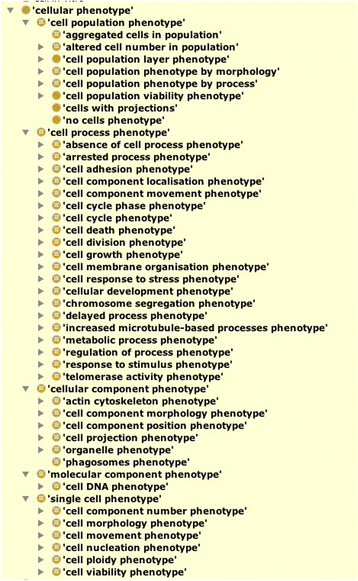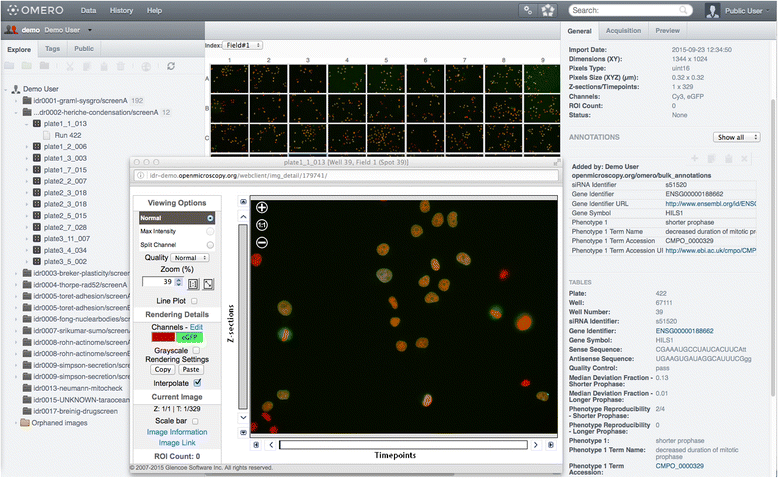The cellular microscopy phenotype ontology
- PMID: 27195102
- PMCID: PMC4870745
- DOI: 10.1186/s13326-016-0074-0
The cellular microscopy phenotype ontology
Abstract
Background: Phenotypic data derived from high content screening is currently annotated using free-text, thus preventing the integration of independent datasets, including those generated in different biological domains, such as cell lines, mouse and human tissues.
Description: We present the Cellular Microscopy Phenotype Ontology (CMPO), a species neutral ontology for describing phenotypic observations relating to the whole cell, cellular components, cellular processes and cell populations. CMPO is compatible with related ontology efforts, allowing for future cross-species integration of phenotypic data. CMPO was developed following a curator-driven approach where phenotype data were annotated by expert biologists following the Entity-Quality (EQ) pattern. These EQs were subsequently transformed into new CMPO terms following an established post composition process.
Conclusion: CMPO is currently being utilized to annotate phenotypes associated with high content screening datasets stored in several image repositories including the Image Data Repository (IDR), MitoSys project database and the Cellular Phenotype Database to facilitate data browsing and discoverability.
Keywords: Cellular phenotype; Imaging; OWL; Ontology.
Figures


References
MeSH terms
Grants and funding
LinkOut - more resources
Full Text Sources
Other Literature Sources
Molecular Biology Databases

